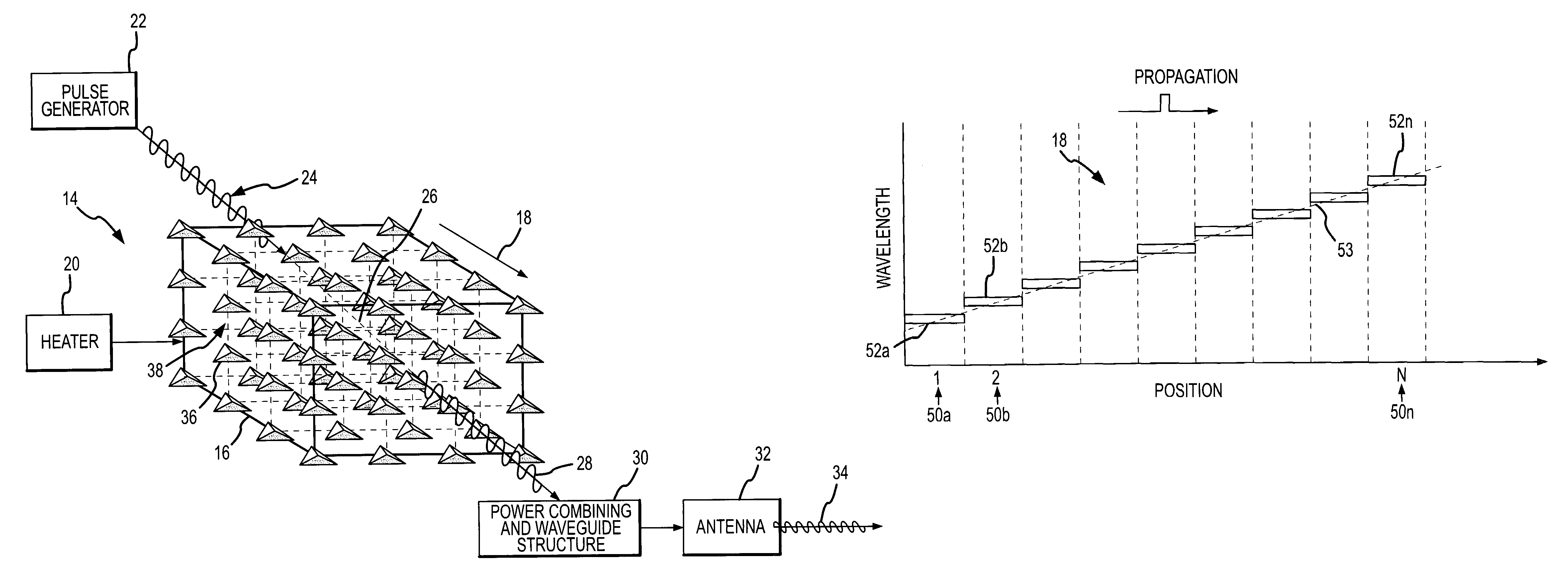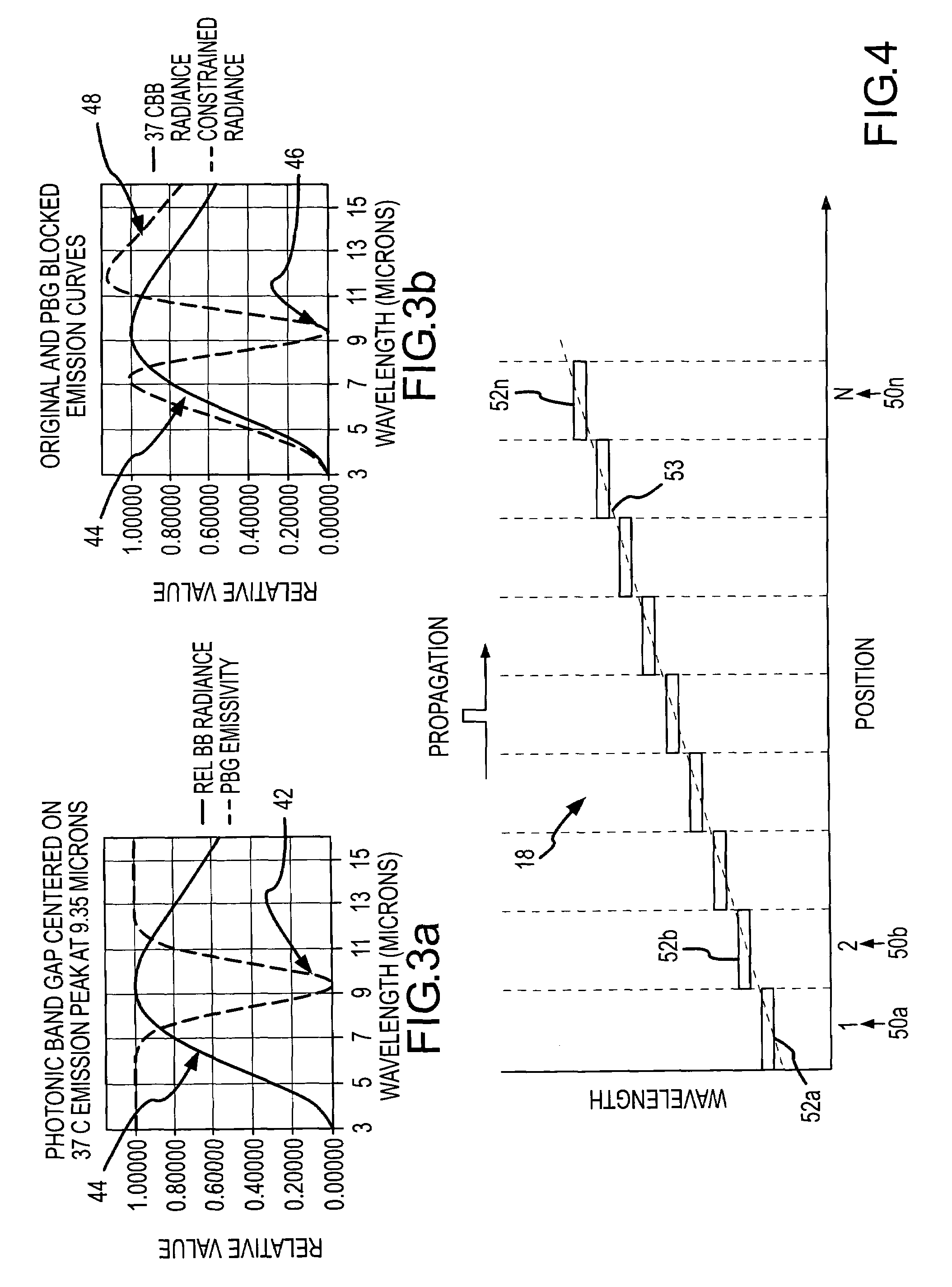Dynamic control of planck radiation in photonic crystals
a technology of photonic crystals and radiation sources, applied in the field of dynamic control of planck radiation in photonic crystals, can solve the problems of limited output power of conventional thz sources, complex optical networks and cooling systems, and large lasers, and achieve the bandwidth and frequency agility to source electromagnetic energy at thz and other frequencies
- Summary
- Abstract
- Description
- Claims
- Application Information
AI Technical Summary
Benefits of technology
Problems solved by technology
Method used
Image
Examples
Embodiment Construction
[0027]The present invention describes how to design and dynamically control a PC to modify the Planck spectral distribution of thermal electromagnetic radiation, and more specifically to shift the primary emission wavelength and reshape the distribution to concentrate more thermal energy around the shifted peak. This approach is useful to configure a compact, reliable and low-cost source with the bandwidth and frequency agility to supply electromagnetic energy at THz and other frequencies. These sources will have great impact in many applications, e.g., biological and / or chemical sensing, biomedical and other imaging systems, spectroscopy, unmanned aerial vehicle systems, training devices and automated traffic products.
[0028]Li supra and Lin supra teach designing the DOS to suppress radiation emissions in the IR region and significantly enhance thermal radiation emissions in the visible waveband (approximately 0.5 μm). These principles were extended to shift the peak radiation to lo...
PUM
 Login to View More
Login to View More Abstract
Description
Claims
Application Information
 Login to View More
Login to View More - R&D
- Intellectual Property
- Life Sciences
- Materials
- Tech Scout
- Unparalleled Data Quality
- Higher Quality Content
- 60% Fewer Hallucinations
Browse by: Latest US Patents, China's latest patents, Technical Efficacy Thesaurus, Application Domain, Technology Topic, Popular Technical Reports.
© 2025 PatSnap. All rights reserved.Legal|Privacy policy|Modern Slavery Act Transparency Statement|Sitemap|About US| Contact US: help@patsnap.com



